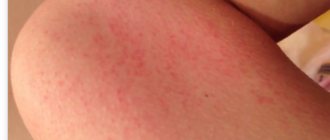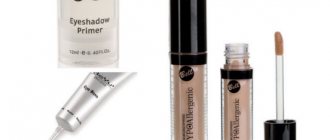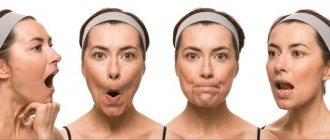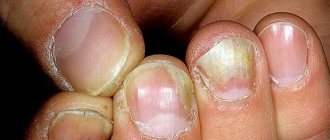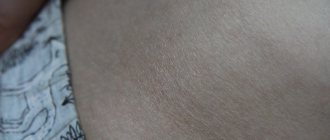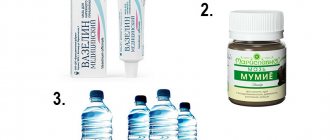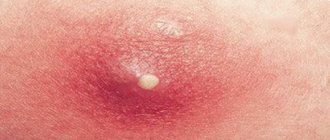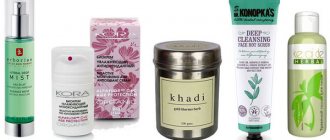Causes of peeling feet
The dermis is an organ that serves as a reliable barrier against negative environmental factors.
When it starts to flake, peel, and itch, not everyone knows how to act and treat it. Every year the skin becomes thinner, does not retain moisture well and begins to crack and flake. The culprit is the process of disappearance of collagen fibers involved in the formation of the dermis. As a result, the water-lipid layer ceases to cope with its functions and a disturbance in the production of sebum occurs, the volume of water in the cells decreases, etc.
A healthy diet must contain a sufficient amount of vegetable oils, seafood, fruits and vegetables, and fish.
With the development of vitamin deficiency, the epidermis on the legs begins to dry out.
It is important to drink enough liquid up to 1.5 - 2 liters per day.
The foot may peel due to frequent consumption of coffee drinks, ready-made fast foods, alcohol and smoking.
Often the reason lies in an allergic reaction to cosmetics, materials, or food. Also, the skin of the legs can react to aggressive hair removal procedures - depilation, sugaring.
Skin peeling can develop due to a fungal infection. The whole foot or one toe or heel may be involved in the process. An additional symptom is itching. The patient requires consultation with a specialist. Fungal diseases are dealt with by a dermatologist who will prescribe a scraping and blood test. Cosmetic problems can develop as a result of the progression of exofoliative dermatitis, psoriasis, Kawasaki syndrome, eczema. It is the source that needs to be treated, not its consequence.
Infection and fungus are not the main culprits of peeling. A number of somatic diseases can send signals to the body in the form of cracks and dryness:
- hepatitis;
- diabetes;
- kidney pathologies;
- cirrhosis of the liver.
Steroid hormone medications can also cause peeling, even when taken for a short period of time.
Pregnancy provokes hormonal imbalances, and the skin on the feet can peel off and cause discomfort and pain.
If the skin on your feet is peeling, then the first thing you need to do is analyze the following points:
- Prolonged stay in a pond with the addition of bleach and other chemicals.
- Shoes, tights, socks made of artificial non-breathable materials. Such things do not allow oxygen to pass through, interfere with the normal respiration of cells, as a result, the local temperature and sole rise, and the foot begins to get wet.
- Dry indoor air during the heating season.
- Prolonged exposure to ultraviolet rays. A tan looks beautiful, but it causes dehydration, and the dermis can begin to exfoliate, burst and peel.
Proper therapeutic care and elimination of irritating factors will restore the beauty of your feet.
To improve the condition of your feet, you must follow these rules:
- Remove dead cells every day. Pumice will come to the rescue.
- It's good to dry your feet after a shower.
- Carry out contrast baths with vinegar, soda or lemon every day.
- Before applying cream or ointment, treat cracks with peroxide.
- After the procedures, apply the medicinal product.
An important condition is that the child’s skin must be treated with gentle preparations.
Why do my feet itch and peel?
The cause of exfoliation and peeling of the epidermis can be external factors, malfunctions of internal organs, infections in the form of bacteria, viruses and fungi, and simple failure to comply with hygiene rules. If you detect the problem in time and establish the true cause of the disorder, you can quickly get rid of the problem and restore the condition of the skin.
Impact of external factors
Often the lower limbs of adults begin to peel and peel due to exposure to the external environment. The reason is wearing low-quality, uncomfortable shoes made of unnatural material, and frequent use of high heels.
The soles may peel due to prolonged wearing of hosiery and socks. If shoes are made of poor quality material, the skin on the feet cannot fully breathe due to clogged pores.
During certain weather conditions, severe dry skin may also occur. In frosts and low humidity, adults and children often develop a kind of allergic reaction in the form of peeling. Therefore, during cold weather it is necessary to monitor the condition of your feet and do not forget to take care of them.
- If cosmetic products contain harmful additives and are of poor quality, they can not only dry out the feet, but also provoke allergies. In this case, additional treatment with antihistamines will be required.
- When cosmetics contain alkaline substances, it also dries out the skin. Shower products can cause a similar reaction on your feet if you use them every day.
- The epithelium on the feet may peel if the indoor air is too dry. This can be avoided by frequently ventilating the room and using humidifiers.
Poor nutrition
Since the condition of the skin directly depends on the functioning of the internal processes of the body, pathology can be caused by metabolic disorders, lack of vitamins and minerals.
Feet can itch and itch if the human body does not have enough fluid. Smoked and salty foods also increase thirst. To prevent your skin condition from changing, you need to drink at least 2.5 liters of water per day, not including tea and soup.
Common problems that lead to dry skin on the legs include a lack or, conversely, an overdose of nutrients. When the body lacks vitamin B and D, the heels begin to peel and itch, and the skin on the toes peels off.
Hypervitaminosis can also cause skin problems. In particular, an increased concentration of vitamin C often dries out the skin.
A similar reaction is sometimes caused by certain microelements, the content of which is exceeded.
Main reasons for the phenomenon
There are a number of different factors that can cause dry, peeling skin on your feet. The main causes of peeling feet:
- Insufficient hydration of the epidermis, leading to its drying out. Most often it peels off on the feet during the hot season, when the human body is constantly experiencing a lack of water. Also, the epidermis often dries out in winter, when skin moisture is greatly reduced due to exposure to heating devices.
- Wearing uncomfortable closed shoes made from artificial materials provokes impaired skin respiration, which often leads to dry skin and flaking.
- The skin will also peel off when wearing tights and socks made of synthetics. They not only disrupt the breathing process of the skin, but also negatively affect the functioning of the tissues of the foot. The negative impact of synthetic materials also often provokes peeling of the epidermis.
- Fungal infection of the skin is one of the most common causes of peeling. In this case, a person experiences severe itching in the area of the feet and an unpleasant odor of the feet. Such microorganisms most often affect people visiting public institutions, such as swimming pools, baths and saunas, therefore, while staying in them, you should use personal rubber shoes (slippers, flip-flops).
- Skin peels due to lack of vitamins and minerals. This process is especially active in the presence of chronic diseases and weakened immunity. In this case, peeling of the epidermis is often observed not only in the feet, but also in other parts of the body. Vitamin deficiency and hypovitaminosis also cause hair loss and brittle nails. Most often, peeling skin occurs due to a lack of vitamins A and E, which are involved in the process of skin regeneration.
- Prolonged exposure to hard and chlorinated water and some cosmetic detergents also leads to peeling of the epidermis.
- Ultraviolet radiation also has a negative effect on the skin of the feet, which often leads to burns of the epidermis.
- Peeling of the epidermis of the feet is also often observed in cases of disorders of the gastrointestinal tract and poor nutrition.
- Peeling of the epidermis of the legs is observed with constant stress, overwork and nervous tension.
Regular foot baths help remove dead skin
Vitamin deficiency
A lack of vitamins and microelements important for work can also provoke the effect of peeling of the skin, the causes of which we are establishing.
It is worth remembering that with vitamin deficiency, no amount of moisturizing the dermis of the body with cosmetics will help. You need to help the body from the inside.
Peeling due to vitamin deficiency is localized on the face, elbows and knees. Dryness and itching can be caused by a lack of the following vitamins:
- Vitamin K. Against the background of dry skin, increased bleeding and slow healing of wounds are noted.
- Vitamin A. Here, not only does the body itch, but also vision deteriorates. In addition, hair and nails suffer.
- B vitamins. In addition to peeling and dryness of the dermis, the patient experiences nervousness, fatigue, sleep disorders, and dandruff.
- Vitamin C. The skin becomes very dry, wrinkles form, and bleeding gums are noted.
- Vitamin E. Skin aging and increased pigmentation are noted.
Treatment and prevention
In addition to traditional medicine, you can use cosmetic methods to soften your skin without leaving your home. They are suitable for both children and adults.
Ointments and compresses moisturize and nourish the skin of the feet of a child and an adult:
- Prepare two yolks, add a few tablespoons of warm oil (sunflower or olive) to them. Whisk the mixture well, apply to clean feet, wrapping them in plastic wrap. Put on socks, walk for an hour, then wash off.
- Take any foot cream, mix three spoons with 50 milliliters of chamomile infusion. Next, make a solution from starch: dilute two tablespoons of powder with water to make sour cream. Mix both solutions and spread it on your feet. Wrap your feet in film and put socks on top. Wash your feet well after half an hour.
- Prepare a few spoons of rich body cream, add a little freshly squeezed carrot or beet juice to it (you can even mix both juices). Apply the resulting mixture to your feet and wash them after 30 to 40 minutes.
Add table or sea salt to a bowl of warm water (not hot!). Approximately a spoonful of salt per liter of water. After dissolving it, place your feet in water for 15-20 minutes, treat your feet with pumice. Dry your feet well with a terry towel. At the end of the procedure, lubricate with a moisturizing or nourishing cream.
It could be chamomile, nettle, or calendula. Take one of the herbs or brew them all together. For a glass of boiling water you will need a spoonful of raw materials. After half an hour, the decoction can be used. For a liter of water, a glass of decoction. Keep your feet in this bath for 20-25 minutes. Natural ingredients soothe the skin and heal wounds. Afterwards, treat the legs with pumice stone and use cream.
For our miraculous bath, take a couple of tablespoons of salt and dissolve it in a liter of water. After the salt has completely dissolved, add a couple of drops of iodine. Daily use of this procedure will very quickly relieve you of this disease. Check out this article if you have peeling skin on your fingers.
Watch your health! Remember it is easier to prevent a problem than to treat it!
To prevent peeling of the skin on your legs, you should monitor its condition. To do this you need:
- Wash your feet every day and then apply nourishing cream to them.
- It is advisable to take warm baths every other day. You can add various herbs to them, for example: nettle, chamomile, calendula.
- Baths with lemon juice are excellent: 1 tablespoon of juice per 1 liter of water. Steam your feet for at least 20 minutes, then treat the skin with a grater or pumice stone.
- Doctors do not advise wearing tight shoes that are uncomfortable to walk in.
- Wear tights and socks made from natural fabrics. Drink enough fluids.
- Eat right, regularly replenish your body with vitamins and minerals.
- If gastrointestinal diseases are noticed, treat them immediately.
Treating the foot with anti-fungal ointment
Foot skin treatment is simple but long lasting. On the first day, it is advisable to start using steroid hormones. If the situation is not severe, you can buy antifungal ointment or cream. The drug of group B includes two active ingredients: one destroys the fungus, the second relieves itching and inflammation of the skin. Even when the illness has passed, you still need to apply it for another two weeks or even a month. Systemic therapy can be used, but it has a number of limitations.
Shoe care is the most important. It must be washed at a temperature of at least 60 degrees to kill all fungal spores. Boil and steam insoles to get rid of fungus in slippers and boots forever. Bleach also helps a lot when washing. At the end of treatment, after a month, it is advisable to throw out shoes and socks and buy new ones. It is worth remembering that fungus is a recurrent thing.
Treatment methods
How and with what to treat:
- If the itching is caused by an allergy , you should remove what negatively affects the skin and the body;
- Examine your feet carefully . Cuts, abrasions, and burns can itch. They are easily cured with antiseptics;
- During itchy feet, sulfur ointment or Wilkinson's ointment helps a lot . However, it is worth remembering that not a single remedy will help if personal hygiene is not observed;
- The course of treatment for autoimmune diseases is prescribed by a specialist.
You can't comb your legs!
Traditional therapy
Traditional treatment involves timely diagnosis as well as the prescription of drugs for local and general therapy. The process should be led by the attending physician.
You can also try home remedies to soothe the irritation, but you should consult your doctor before trying these recipes.
What to do:
- Mix 1 teaspoon of celandine Wipe the itchy areas of the feet with the solution;
- Propolis tincture will help relieve itchy feet . Apply to irritated skin using gauze a couple of times a day. The itching will go away in 15 minutes, and your feet will stop itching;
- Buy mumiyo at the pharmacy . It will restore the skin. Apply the compress to the soles for 30 minutes;
- Baking soda will help relieve itchy feet . It must be filled with water until it turns into porridge. Apply the resulting product to the affected areas and wait until it dries completely. Rinse off the remaining product with water.
Effective itching relievers
If your feet itch, you can take remedies to relieve the itching:
- Anti-itch ointment Sinaflan - relieves itching of the feet after the first use, moisturizes the skin. During pregnancy, skin tuberculosis, the drug is not permissible for use;
- Akriderm Genta is a medicine based on an antibiotic. It is prescribed by doctors for the treatment of various dermatological diseases. Applying the drug to scratches, wounds, pimples, spots, rashes in the form of red dots is contraindicated;
- Sulfur ointment is a budget-friendly, effective remedy that has antiseptic properties.
Medications
If studies have revealed another inflammatory factor, for example, heat exposure, you should take drugs from other groups :
- Anti-inflammatory;
- Antiallergic – reduce itching, redness, relieve irritation;
- Antiseptic.
Take an over-the-counter antihistamine
This advice will help if you suspect that allergic processes have begun, accompanied by itching of the right and left legs. Otherwise, the medicine will be useless.
Baby cream and essential oils
The best baby cream is Iricar. It relieves inflammation and severe itching of the feet. The ointment should be applied in a thin layer 3 times a day and the discomfort will subside over time. Treating baby itching with essential oils is also common.
Suitable:
- Tea tree;
- Jojoba;
- Mint.
For a better effect, add a few drops of oil to Vaseline and apply 2-3 times a day to the area of concern. At the same time, it is extremely important to correctly determine the reason why the left and right legs itch, otherwise the oils can cause harm.
Treatment at home
You can try to relieve itchy feet at home before you see a specialist:
- Soothing Baths – Take soothing foot baths with infusions or baking soda to relieve uncomfortable burning feet.
- Alcohol solution - only after understanding the cause of the itching and in the absence of contraindications from a doctor, you can use an alcohol solution. A diluted liquid of boric acid in a tea decoction with alcohol relieves even the most severe scabies of the feet due to eczema in 20 minutes.
- Use a cool compress – To relieve itching on the palms and soles of the feet at night, you can apply a cloth soaked in ice water or a bag of frozen food wrapped in a thin towel to the area that is bothering you. Your feet will stop itching for a while.
- Take a bath with oatmeal - at night, the soles of your feet may itch more, and ointments may not cope with anxiety, so the best solution is a liquid that contains oats. Add a couple of tablespoons of the product to the foot bath, keep them in the solution for 20 minutes.
- Moisturize your skin – allergies can cause the soles of your feet to become swollen and swollen. A hypoallergenic moisturizer can help in this situation.
- Try not to itch – in the evening, before bed, irritation often worsens, so it’s hard not to itch your feet. However, it is worth remembering that scratching the swollen area can cause infection.
What to do if the skin of your legs peels off
Why does the skin on my heels peel off? This phenomenon is observed in almost a third of the adult population of the Earth. Most often, women are concerned about this problem, and men pay little attention to it.
At the same time, neglected conditions often lead to the appearance of painful and intractable cracks in the heels.
Why does peeling of the epidermis occur in this area? Its complete update is carried out in 3-4 weeks. During this process, cells located in the lower layers of the epidermis constantly divide and rise to its upper layers. Over time, they die and disappear. During the normal process of skin regeneration, no special peeling is observed.
With regular foot care using foot baths and exfoliating the epidermis using pumice or special graters, as well as with the constant application of special creams, the heels will always remain smooth.
To eliminate unpleasant symptoms, a number of measures are necessary to restore the functioning of the integument. Home care is one of the most preferred options among women.
No. 1 Mix the yolk of one egg with 1 tsp. butter. Add 2 tsp. grated potatoes and baby cream. Apply the mixture to pre-steamed skin and wrap with cling film and a warm towel. Remove the compress after 20 minutes. Repeat twice a week.
No. 2 A mint bath will help get rid of dryness and restore skin tone. To prepare it, you need to grind dry mint and mix it in equal proportions with calendula and chamomile herbs. Pour 1 liter. boiling water, leave to infuse for several hours. Pass the broth through a sieve and add to warm water.
No. 3 Heat 2 tbsp in a steam bath. spoons of honey. Combine with the same amount of olive oil. Dry skin is treated, every crack and wound. Leave the mask on for 20 minutes and rinse with warm water.
Pharmacy products
The pharmacy offers a wide range of products that will stop the skin on your feet from peeling.
The most popular of them:
- Extra. This cream will give freshness, disinfect, prevent fungus and unpleasant odor.
- Gehwol drug. Maintains water-lipid balance, suitable for sensitive skin.
- Refreshing balm. A good helper for outdoor enthusiasts. Relieves itching, refreshes, improves blood flow.
- Akriderm. Heel syndrome relieves ointment and cream. They relieve itching, eliminate allergies, inflammation and swelling.
If no infectious disease is detected, the doctor may prescribe vitamins.
If your heels are peeling, and not a single folk method helps, it’s time to go to a beauty salon. Professional treatment will bring quick results.
The specialist will perform peeling, which helps the keratinization to peel off. This is necessary so that new healthy skin can form on the damaged skin.
Next, the feet will be treated: paraffin therapy or chemical masks and procedures to increase moisture levels.
Massage: the entire foot, each toe, toe and ankle are worked out to improve blood circulation and the limb to receive nutrients and oxygen.
- Incorrect care. A trimmed pedicure, removing rough skin with a razor or filing away rough pumice stones give an instant illusion of well-groomed skin. As a result, you get perfectly smooth, soft heels. However, after a few days, the injured skin will begin to grow rapidly again, and then become rough and crack.
- Incorrectly selected shoes. Shoes that are too tight are harmful both to the foot in general and to the condition of the skin on the heels. Constant pressure on this area leads to deformation of the skin, the appearance of calluses and cracks. No less harmful are shoes that are too loose, in which the foot is not in a fixed state, which is why it constantly rubs, becomes rough and hurts very much.
Methods for eliminating dry skin
Regardless of the reason why peeling occurs, it is necessary to regularly carry out moisturizing procedures. All substances with moisturizing properties can be divided into the following types:
- Hydrophobic - capable of forming a membrane on the surface of the epidermis and preventing the rapid evaporation of liquid.
- Hydrophilic - engaged in moisturizing the stratum corneum from the inside. In addition, they also retain moisture on the surface of the epidermis.
One of the new products in modern hydration is aquaporins. This is a kind of water gate of cells that is responsible for the entry and exit of moisture from cellular tissue.
Herbal foot baths
To quickly eliminate peeling of the legs, feet and fingers, you can add herbal infusions to the water and make special baths with them. Such procedures will moisturize the skin and prevent it from cracking in the future.
Events must be held twice a week. Chamomile, celandine, hops and many other medicinal herbs provide an excellent moisturizing effect. To consolidate the result, it is recommended to lubricate your feet with moisturizers.
Moisturizing foot masks
With the help of foot masks, you can eliminate not only dryness in a fairly short time, but also completely improve your skin health. There are many recipes for home use. You can start with the simplest and most accessible means:
- For the first recipe you will need vitamins A, E in capsules, 50 ml of almond oil and 100 ml of full-fat sour cream. All prepared ingredients must be mixed and applied to problem areas of the feet, leave the mixture on the feet for 30 minutes and rinse.
- For the second recipe you will need a spoon of butter, one yolk, 2 tbsp. l. grated raw potatoes and a small amount of baby cream. Mix everything until smooth, steam your feet thoroughly and apply the prepared mixture to them. After this, you need to wrap the greased areas with cling film and insulate them (you can wear warm tights or trousers). All you have to do is wait a quarter of an hour, wash the mixture off your feet and apply moisturizer to them.
It is highly undesirable for those with dry and flaky skin to use scrubs or peels. This could traumatize her even more.
Diagnostics
Only a dermatologist can accurately determine the cause of peeling and peeling skin on the feet. He will conduct a visual inspection and prescribe the necessary tests. Only after establishing the cause of this phenomenon can the necessary therapy begin.
Moisturizing your feet every day at night helps keep them healthy.
Danger of spreading infection
It’s easier to avoid contracting infections - don’t go to the pool, don’t wash in public showers, don’t walk barefoot in public places. But if these measures are too drastic, there is an alternative solution: wear flip-flops or other suitable shoes in the shower or on the beach.
After each use of the pool, wash and dry your feet, especially between the toes, where microorganisms thrive most. Antiperspirants can be used.
Pay attention to any changes in the condition of your feet. Peeling skin on the soles of the feet caused by a fungus can lead to the spread of infection if left untreated. Severe itching occurs, damage to nails and other parts of the body occurs. This complicates and prolongs the general treatment of the disease.
Therapy
A dermatologist can determine the exact causes of peeling and peeling of the upper layers of the epidermis. During the diagnosis, the damaged feet are examined, and the patient undergoes the necessary tests. After identifying the cause of peeling skin on the feet, complex therapy is used. Among the therapeutic measures, a bath can be used. Sea or table salt is added to the water.
You can get rid of the problem of peeling using folk remedies using laundry soap (72% concentration). They need to rub their feet every evening. Then you need to put on socks (cotton or cotton) and go to bed. The next morning, wash your feet in warm water and apply moisturizer.
We also recommend reading: Why does the skin on my toes peel off?
- The skin of the feet is cleansed daily by using baths with table or sea salt or baking soda (1 tablespoon per 1 liter of water). After this, the keratinized epidermis is removed with a pumice stone or a special grater. After this procedure, a special moisturizing foot cream is applied to the feet.
- Rubbing your feet with laundry soap every night gives good results (72%). After this, cotton socks are put on your feet and left until the morning. In the morning, feet are washed with warm water and moisturized with cream.
- They take complex preparations that contain vitamins A, B, E, D and microelements (zinc, selenium, magnesium).
- They switch to a proper diet, which is rich in fresh vegetables and fruits, includes fatty sea fish, dairy products, and cereals.
- If a fungal infection is detected on the foot, the following external medications are used: Kanison, Lamisil, Mycospor, Batrafen, Exoderil, Lotseril. They are used only on the recommendation of a doctor.
How to treat
The aesthetic appearance of the heels suggests their smoothness, but peeling and redness does not add beauty to them. In addition, there is a certain discomfort.
The question arises: what to do? How to get rid of excessive dryness, overcome itching and restore lightness and attractiveness to your legs? There is no definite answer, since the variety of provoking factors suggests different approaches to their treatment.
To make an accurate diagnosis and identify the problem, it is necessary to undergo a full examination. If some kind of internal disease is diagnosed, which is the source of damage and damage to the skin of the feet, then an exclusively competent treatment regimen will help to overcome the unpleasant symptoms. It will be prescribed by a dermatologist.
If the reason is the lack of a healthy diet, then it is necessary to reconsider the approach to cooking and the list of foods consumed.
- Eating large amounts of vegetable fats, raw vegetables and fruits helps improve skin condition.
- It is important to exclude frying as a method of processing food and give preference to steaming, baking, stewing and boiling. You can eat lean meats and fish.
- The water-salt balance can be adjusted by drinking the prescribed amount of water daily; at the same time, it is recommended to completely give up coffee, since it has a diuretic effect and contributes to dehydration of the body.
If no serious pathologies have been identified, but the feet still peel and itch, it makes sense to pay attention to hygiene issues. Most likely, hygiene standards are not fully observed, or perhaps the care is not entirely correct, or the wrong cosmetic products are used.
Locations
The dermis can peel off in different areas of the foot. Depending on the location, the cause can be determined.
If your heel cracks:
- avitaminosis;
- fungus;
- insufficient humidity in the room;
- contact with synthetics;
- uncomfortable shoes;
- age;
- chlorinated water;
- climate change;
- allergy;
- stress;
- taking medications.
The feet peel under the influence of the same factors, but diabetes and various endocrine disorders are added to them.
Why does the skin peel off on my toes? The problem occurs as a result of bacterial or fungal infections. Less commonly, the condition is provoked by allergies. The dermis may itch, turn red or yellow, and emit a foul odor.
Lichen and fungus
Ringworm on the leg
The term “lichen” refers to skin lesions of various etiologies. These can be viral, infectious, or fungal and autoimmune diseases associated with changes and damage to part of the skin.
This disease is accompanied by the appearance of a rash (these can be blisters, papules, spots, etc.). Fungal rashes on the leg provoke itching of the skin in the area of manifestation.
Fungal infections often affect the feet and discomfort is localized in this area of the leg. And if your ankles and higher legs itch, this may indicate lichen. This disease is also characterized by visible skin manifestations. The plaques are light pink in color, often round in shape, and peel off.
This manifestation can be immediately noticed and the exact cause can be determined by scraping the flaky epithelium and confirming it with laboratory analysis.
Foot care
Socks for pedicure
Today, decorative cosmetics stores sell special pedicure socks. They are used in an innovative procedure that allows you to get your legs in perfect order at home without the risk and waste of time visiting an expensive beauty salon. The main components included in the composition are lactic acid and plant extracts of burdock, lemon, ivy, sage and other medicinal herbs. They stimulate the process of rejection of dead cells naturally.
If a symptom is detected, you must first make sure that there are no serious diseases, allergies or fungal infections. If there are no pathologies, and peeling is associated with increased dry skin, wearing uncomfortable shoes, then your feet need special care. The following procedures are effective at home:
- prepare the dough from 2 tbsp. lie liquid honey and 3 tbsp. lie wheat flour. Two cakes are formed, which are applied to the feet, previously steamed in hot water. Cover the top with polyethylene and put on socks;
- medicinal baths of water with the addition of apple cider vinegar (in equal proportions) quickly heal cracks and disinfect. After the procedure, be sure to lubricate your feet with a nourishing cream at night and put on socks. In the morning, keratinized skin can be easily removed using regular pumice.
The top layer of the epidermis must be removed daily with a hard abrasive file on a dry surface. Only then can the feet be steamed and smeared with nourishing compounds. To reduce the likelihood of fungus appearing after water procedures, feet should be wiped dry, paying special attention to the area between the toes. It is important to balance your diet by adding more fresh fruits and vegetables, meat, and cereals. A course of vitamins will help improve your skin condition. It is important to avoid stress, exercise and comprehensively strengthen the body.
Preventive measures
To avoid a repeat of the unpleasant situation when the skin peels off, doctors recommend:
- Avoid wearing tight, uncomfortable shoes.
- Increase the amount of clean water consumed.
- Treat exacerbations of chronic diseases in a timely manner.
- Wear underwear made from high-quality natural materials.
- Maintain a balanced, healthy diet.
Feet experience serious stress every day and it is not surprising that one day they begin to signal problems and lose their attractiveness. Cracked heels, dry, itchy and peeling feet require the right approach to treatment and care. In the fight, it is important to follow a complex that heals from the inside, helps old keratinizations peel off, and a new healthy layer grow in their place.
The article has been verified by the editors
Hygiene and preventive measures
The following rules should be followed:
- Visit your dermatologist regularly. You should not start pathological processes and self-medicate;
- Don't buy cheap shoes , neglecting your health. You should also avoid wearing someone else's shoes;
- Don't neglect personal hygiene . Wash your feet often with soap and moisturize them;
- If you receive skin injuries, do not be lazy to treat them with antiseptics;
- Do not overindulge in sweets , regularly test your blood sugar levels;
- After a shower, wipe your feet , legs, and knees dry so that your feet do not itch and do not create favorable conditions for the appearance of fungus.
- If you have rough skin , rub your feet with a pumice stone 2-3 times a week;
- Don't let the problem of hyperhidrosis and bad foot odor go unnoticed.
Effective folk remedies
Many people, both women and men, faced with a similar problem, do not know what to do and how to get rid of peeling. There are a large number of fairly effective folk remedies that help soften, moisturize the skin of the feet, and also prevent it from peeling. When choosing a recipe, you need to carefully study its composition. After all, the product must be used regularly, and it is very important that all ingredients are always available.
The most affordable way to treat peeling is to use laundry soap. For three days before going to bed, you need to thoroughly soap your feet and, without washing them off, wait until your feet dry. The soap should be washed off only in the morning. Baths using salt are useful. The procedure is performed every other day.
Milk foot baths
There are a large number of treatment methods from folk remedies. For example, foot baths. Add table or wine vinegar to the water. Place your feet in this container. After the procedure, your feet should be thoroughly dried. Use only disposable towels; if you don’t have any, you can boil a regular towel and socks. Boiling will kill the fungus. Next, soak the socks in the vinegar solution and leave overnight.
Vinegar can also be diluted with salt and water, or salt with water and soda. Saturated salt solutions should not be hot, but not cold either. Baths are made from plants:
- Lilac flowers are poured with vodka. They insist for two weeks. You can make lotions from this solution.
- Celandine herb has a beneficial effect on the results of treatment of all skin diseases.
- The mint herb is ground with salt and this paste is applied to the affected areas.
- Rowan leaves are also ground with salt.
Garlic also kills fungus. Dilute the garlic pulp with butter and apply to the wound surface. Salicylic ointment is a remedy available to everyone. For quick results, it is better to use 35% ointment. This strong ointment solution can burn healthy skin. But it removes all sores and keratinized tissue on the feet.
Kefir and carrot mask
If your skin is peeling and your doctor has not diagnosed any specific disease, you can use an effective moisturizing recipe.
There are two options for preparing a mask from these useful ingredients:
- Boil a medium carrot and puree it using a masher or blender. Mix the resulting puree with 70 ml. warm kefir and 1 tbsp. olive or flaxseed oil. Apply the resulting substance generously to your feet, then wrap them in cling film and leave for half an hour.
- 1 tbsp. l. freshly squeezed carrot juice is combined in a 1:2 ratio with warmed kefir and 1 tsp. olive oil. The principle of influence remains the same as in the previous recipe.
The root cause is fungus
The skin on the heel and ball of the foot will peel off. Ideally, the soles of your feet should be dry and warm. If it is too dry or too “hot”, then you need to check the thyroid gland. For example, shoes can be the cause of blisters. But bumps at the base of the thumb are more serious problems. The meridian of the pancreas and spleen passes through here. With such a pathology, it can be assumed that patients will suffer from pancreatic function and digestion will be impaired to some extent.
Fungus is a very common problem. He feeds where he is. Manifestations of advanced fungal infection on the sole, i.e. on the feet, is: itching, burning, cracks, redness between the toes, on the soles, changes in the color of the nail plates and already intense peeling of the skin on the feet. They become thin, loose or brittle, yellow in color or gray.
The edges of the nails are destroyed. Sometimes the periungual ridges become inflamed. In this case, you should definitely contact a specialist to conduct a specific study and prescribe adequate treatment for the foot. This is important because symptoms usually subside after a while. The process takes a protracted course, and the skin on the foot comes off in rags, periodically recurring. Such a patient becomes infectious to the people around him.
Symptoms
Since peeling and dry skin on the legs most often cause skin pathologies, it is advisable to consider the most specific symptoms for them as additional clinical signs.
Thus, symptoms will include:
- severe itching and burning in the lower extremities, most pronounced between the toes;
- the formation of small blisters filled with clear or serous fluid. In cases of special or accidental mechanical injury, they burst, which subsequently leads to the appearance of crusts;
- the appearance of red spots, which can be small and multiple or large, but localized in certain areas of the legs;
- violation of the integrity, deformation or change in the shade of the nail plates on the feet;
- unpleasant odor coming from the feet;
- dry skin;
- formation of large tubercles on the skin;
- increased sensitivity of the problem area to external stimuli and touch;
- pulsation in the affected area;
- expansion of the venous network, which gives the lower extremities a bluish tint;
- expression of spider veins and pinpoint hemorrhages;
- skin ulceration.
Spider veins on the legs
Such symptoms are specific, indicating the occurrence of one or another type of infectious process. If redness and peeling of the skin on the legs was caused by other ailments, then the clinical picture will additionally include the most characteristic symptoms for them.
What diseases cause peeling skin on the soles of the feet?
Very often, the reason why itching, whitening and peeling appears on the feet is a fungal infection. Symptoms of the disease can be seen already at the initial stage, when the legs begin to itch.
The presence of fungus can be judged if the nail plates become deformed and thicken. At the same time, the epithelium peels off, the feet itch and hurt. A later stage of infection is accompanied by rashes and hyperemia of the skin.
Infection with the fungus occurs in public places through direct contact with an infected person or his things. Spores can also be found on objects in a bathhouse, sauna, shower, or swimming pool.
Athlete's foot
A very common fungal pathology is athlete's foot. It can be recognized by deep cracks between the toes and on the heels.
Additionally, the disease is accompanied by redness of the skin, intense itching, and an unpleasant odor. Numerous areas of peeling are observed on the feet.
If the disease is left untreated for a long time, in severe cases the cracks give way to bleeding wounds, and the nails become severely deformed.
Rubromycosis of the foot
Also, the skin on the legs begins to peel off when infected with rubromycosis of the feet. This fungus is considered popular; it affects not only the skin between the toes and on the heels, but also the nails themselves.
The disease is weeping in nature, and the person feels burning and itching. The skin folds on the fingers and between them are covered with small cracks.
If treatment is not started in time, the epidermis begins to peel off, and multiple bleeding and difficult-to-heal wounds appear on the feet. Infection with the fungus occurs through close contact with the source of infection and sharing household items.
Candidiasis of the feet
This fungus on the feet is not common, but infection with it is possible. The disease is caused by pathogenic yeast-like fungi Candida, which are found in the natural microflora of the body of every person.
Under the influence of certain factors, microorganisms are activated and begin to grow sharply. This leads to the formation of an inflammatory focus, which is sometimes localized on the legs and arms.

